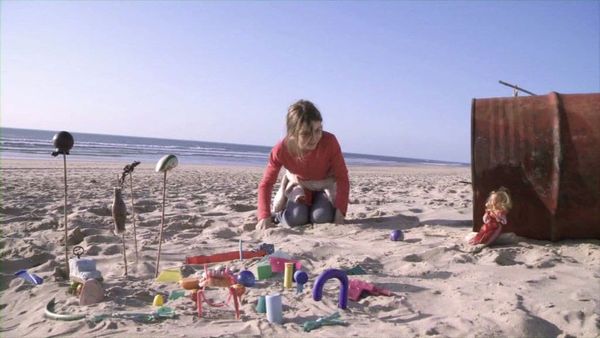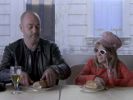Eye For Film >> Movies >> My Name Is Hmmm... (2013) Film Review
My Name Is Hmmm...
Reviewed by: Rebecca Naughten

Youngster Céline (Lou-Lélia Demerliac) cares for her siblings while her Mum - Estelle (Sylvie Testud) - works long hours to support their family. Her dad (Dany - Jacques Bonnaffé) is out of work and showing no sign of leaving the house, never mind pursuing job opportunities. The exhausted Estelle is puzzled by Dany's listless behaviour - and his lack of interest in her - but the audience is aware from the first scene in the family home that he is sexually abusing Céline while his wife is at work.
Taking her Barbie doll along as a confidant, Céline uses a school trip to the seaside as the opportunity to escape, stowing away in the cab of a HGV truck parked up by the beach. The rest of the film is a road movie about the friendship between Céline and the trucker, Peter (Douglas Gordon, the director of Zidane: A 21st Century Portrait) - whose only motivation for not immediately calling the police when he finds a prepubescent girl in his truck seems to be that he has lost his family in a tragedy and enjoys spending time with a child again. Yet at the same time as blithely enjoying a cross-country romp - much like the film, without any sense of a planned resolution - Peter is also sufficiently self-aware and cognisant of how the situation could be interpreted to ask Céline to stay out of sight when they pass through more populated areas.

Lack of motivation is the only through line within My Name Is Hmmm…, the first film of director Agnès Troublé (better known as designer - and sometime film producer - agnès b.). Conversations are awkwardly stilted and lacking in the rhythms of natural speech - in fact, the fragmented and on-the-hoof 'franglais' between Céline and the Scottish trucker is one of the few naturalistic aspects of the film - and the behaviour of the adult characters is not grounded in anything that could be taken as being psychologically believable. In addition, Troublé doesn't seem to trust her actors to act - inner thoughts are served up in monologues, with various characters talking to themselves to express their current state of mind, rather than performed as behaviour.
In terms of the film as form, arty flourishes abound with little overall coherence other than an affectation of whimsy. The film switches formats - digital film, grainy 16mm, from colour to black and white and back again, still photographs and drawings - and makes awkward transitions between scenes in a way that seems done for effect (or due to ineptness) rather than as an organic expression of the narrative. Likewise, the soundtrack is used as a filler of potential silence rather than to illustrate or complement the action or emotion of a given scene. Camera movements and editing - such as the recurring rapid tilt up into the sky - are also unmotivated by the onscreen action and feel like the result of a compulsion to experiment rather than the desire (or capability) to construct a coherent film.
The subject matter may be well intentioned but the treatment of it doesn't ring true, and the execution of the film as a whole is uneven.
Reviewed on: 17 Oct 2014














